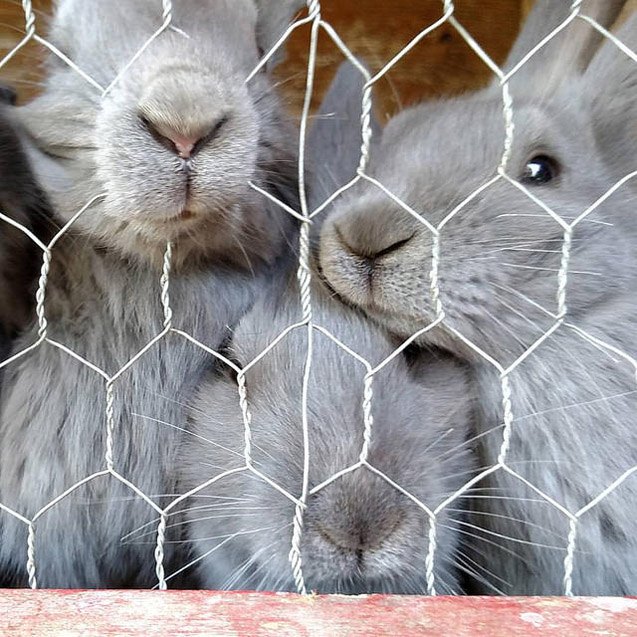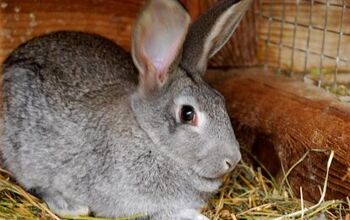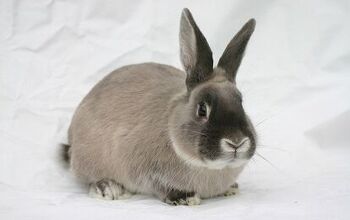Beveren Rabbit


About Beveren Rabbit
This rabbit breed’s origin (not unlike other rabbit breeds) is up for debate. Some say the breed originated in England while others say its name is derived from the place it was first bred – the town of Beveran in Belgium. Believers of the latter origin (from Belgium) say this rabbit was imported in the late 1890’s into Britain and were first shown around 1905 as a show animal. The Beveren Rabbit grew in popularity, and in 1918, the Beveren Club was founded. It soon became the most popular fur breed in the UK. The breed was exported into America and by 1919, it was accepted by the American Rabbit Breeders Association (ARBA).
The Beveren rabbit is active and energetic, and it loves to explore its surroundings.
The Beveren rabbit is large, weighing anywhere between 8-12 lbs, and it has a semi-arch/mandolin shaped body. It has a medium length torso with a broad back and a full, round face. This breed has large ears that usually measure five inches or more when it reaches adulthood, and they stand vertically on their heads, forming a ‘V’ shape.
Beverens have dense, soft fur that rollback when petted. The Beveren rabbit’s coat is short, glossy and thick to the touch. Like dogs and cats, rabbits generally shed more during the fall and spring months, but since the Beveren’s fur is short, you may not notice it as much as other animals. Should you find that your rabbit seems to be shedding too much, simply groom them once or twice every week outdoors with a slicker brush.
The Beveren rabbit comes in a variety of colors, but only three are accepted by the ARBA. This includes solid blue, solid black and the blue-eyed white (BEW).
Due to its large size, Beveren Rabbits require a large enclosure to live a lengthy, comfortable life.
Due to its large size, Beverens require an equally large enclosure to live a lengthy, comfortable life. If you plan to keep your Beveren outdoors, they need a wood enclosure that is raised from the ground and have a fenced bottom with a ramp. Indoor enclosures should have a wire frame on the sides and a plastic bottom where bedding can be placed. Some rabbit cages also have wire bottoms, but the wire is harsh on the rabbit’s feet – bedding is soft and more comfortable. Be sure to spot-clean the bedding every day and completely change the bedding every week.
Beveren rabbits are energetic bunnies who absolutely love to explore their surroundings. Indoor rabbit rooms need to be rabbit-proofed, which means it should be free of anything that can hurt them should they decide to gnaw on them (electrical wires, for example). If you bring your rabbit outside, yards need to be enclosed (so they cannot escape your backyard) and keep an ever-vigilant eye on them to make sure they are not in any immediate danger.
Like most rabbits, they will live a long, healthy life so long as they are given plenty of outdoor time and fed a diet of 70 percent hay and the rest being a mix of pellets, fruits, vegetables, and leafy greens. Some fruits and vegetables can pose a danger to their health. Some food that can be dangerous to your rabbit include seeds from fruits such as apples and pears – they contain tiny particles of cyanide and despite being harmless to humans, they can hurt your rabbit. Bark and cherry tree twigs should be avoided, as well rhubarb (it contains oxalates which prevents absorption of calcium) and mushrooms (this hurts them in the long run, as it has been shown to cause cancer in mice)
The best way to prevent health problems in your pet rabbit is to ensure they have a diet which is high in hay. If your rabbit develops diarrhea because of a poor diet, their soiled coat can attract flies in the warmer months (especially if it is outdoors) and if the rabbit is unable to groom himself properly, the flies can lay eggs in its fur (near the bottom). To avoid this, make sure your rabbit eats a balanced diet and check their fur for any flies that may have landed on soiled fur.
Unlike other animals, a rabbit’s teeth never stop growing. Hay naturally grinds a rabbit’s teeth down to a manageable size. Should you find your rabbit’s teeth to be too long, make sure to bring them to your veterinarian to get them clipped. Ears should also be periodically checked (every 1-2 weeks) for ear mites, as this is another common condition for both indoor and outdoor rabbits.
Beveren rabbits are generally well-mannered and docile.
Beveren rabbits are active, energetic creatures who love to explore whether it is indoors or out. They are generally well-mannered and docile, making them a great pet for seniors who would like a medium-sized, four-legged company or for couples and singles who would like to take their first step into pet ownership. We do not recommend this breed for families with younger children as they do have the tendency to be a little bit skittish when being picked up or handled. Families with older children who understand the need to always be careful when handling an animal, however, should do fine with the Beveren rabbit.
Rabbits are not easy animals to litter train, but it is possible with lots of patience and rewards. Many owners find having several litter boxes spread across the home works well.
In terms of toys, most rabbits enjoy having a few of their own trinkets to play and have some fun with. What kind of toy your particular rabbit seems to enjoy, however, depends completely on their personalities. They could fall head-over-feet over something as simple as a few toilet paper rolls strung together with string or can appreciate the value of a mentally stimulating rabbit-safe toy from your local pet store.
Photo credit: Iepuriromania/Flickr; Adalyn Farm/Flickr; Sally Hallsworth/Flickr

More by Diana Faria

























